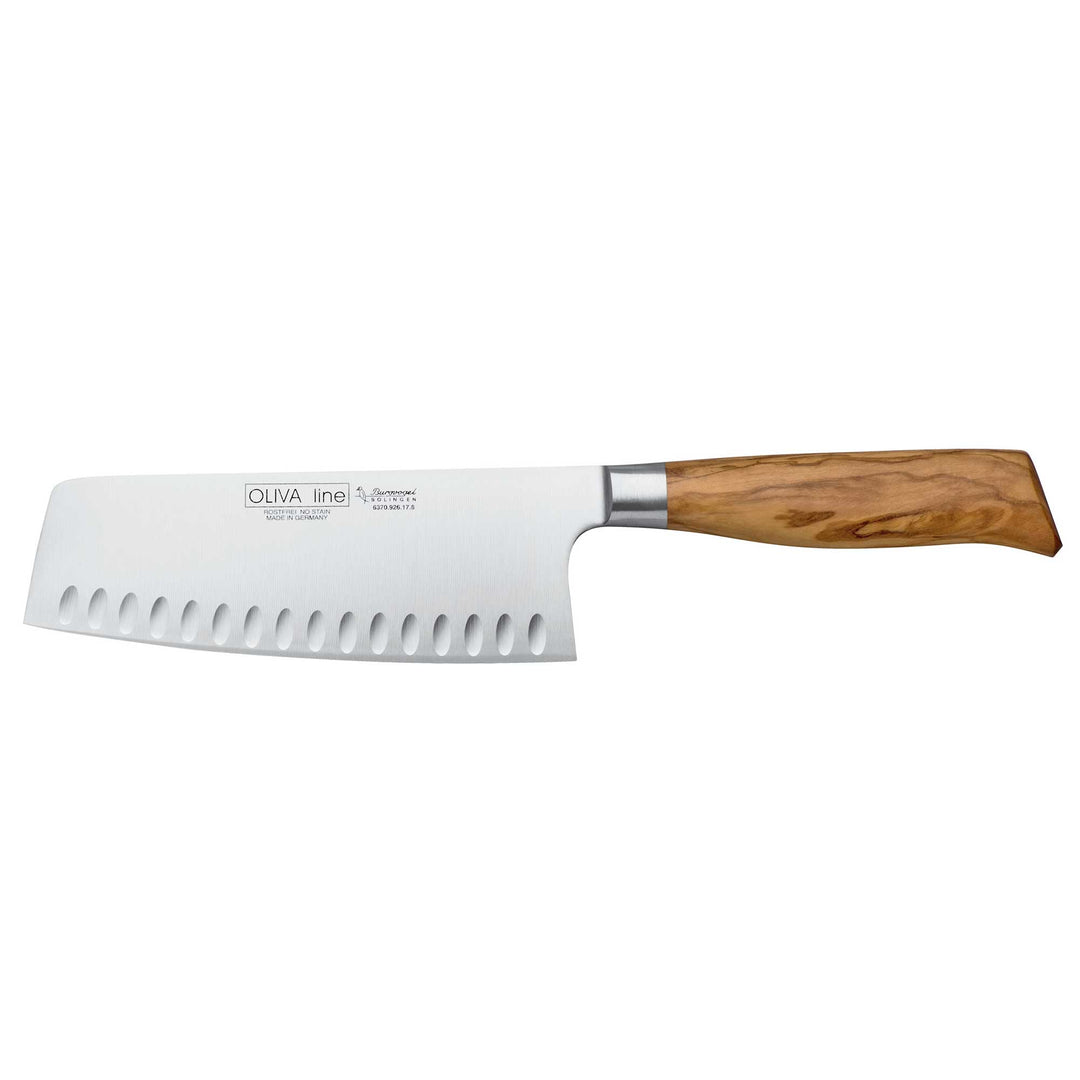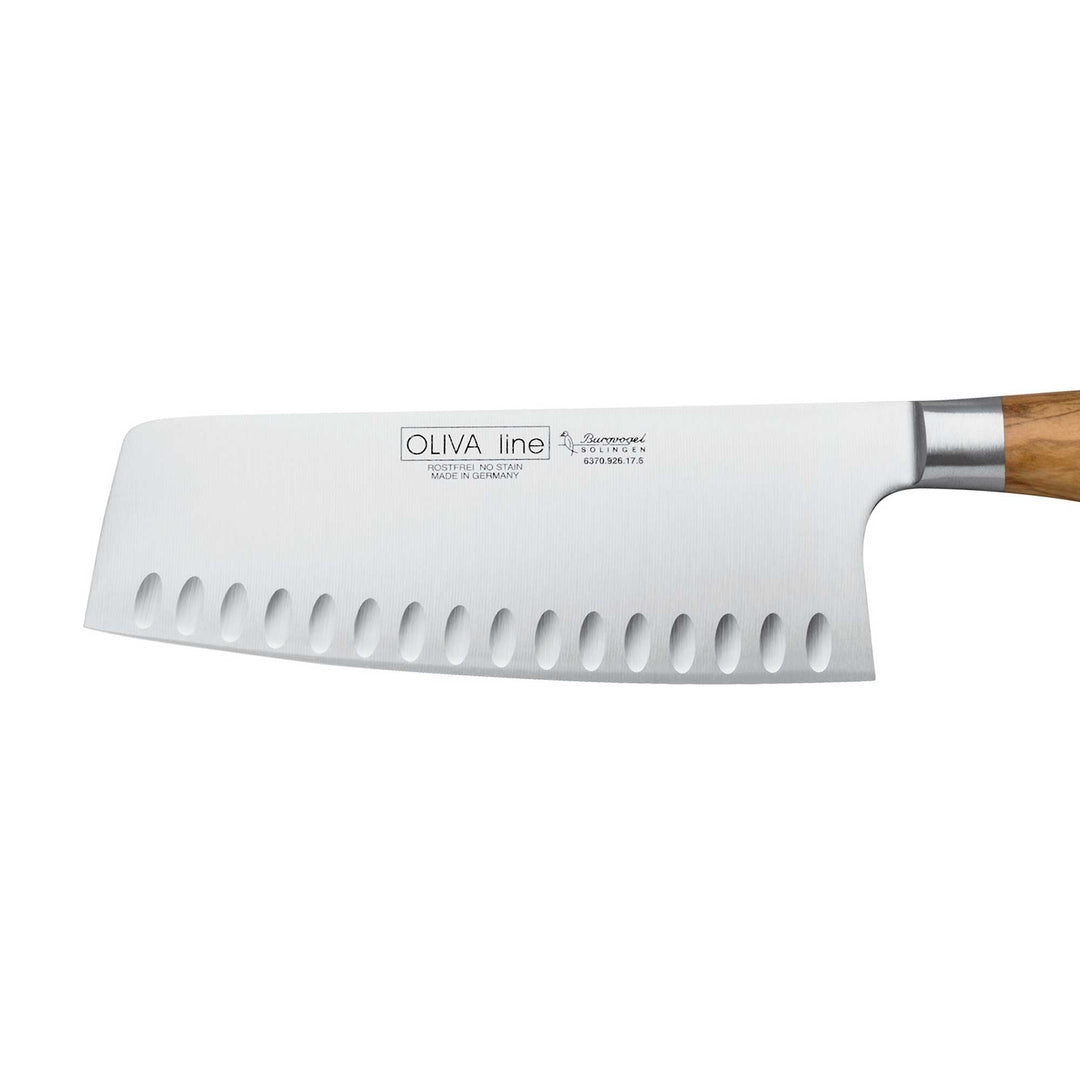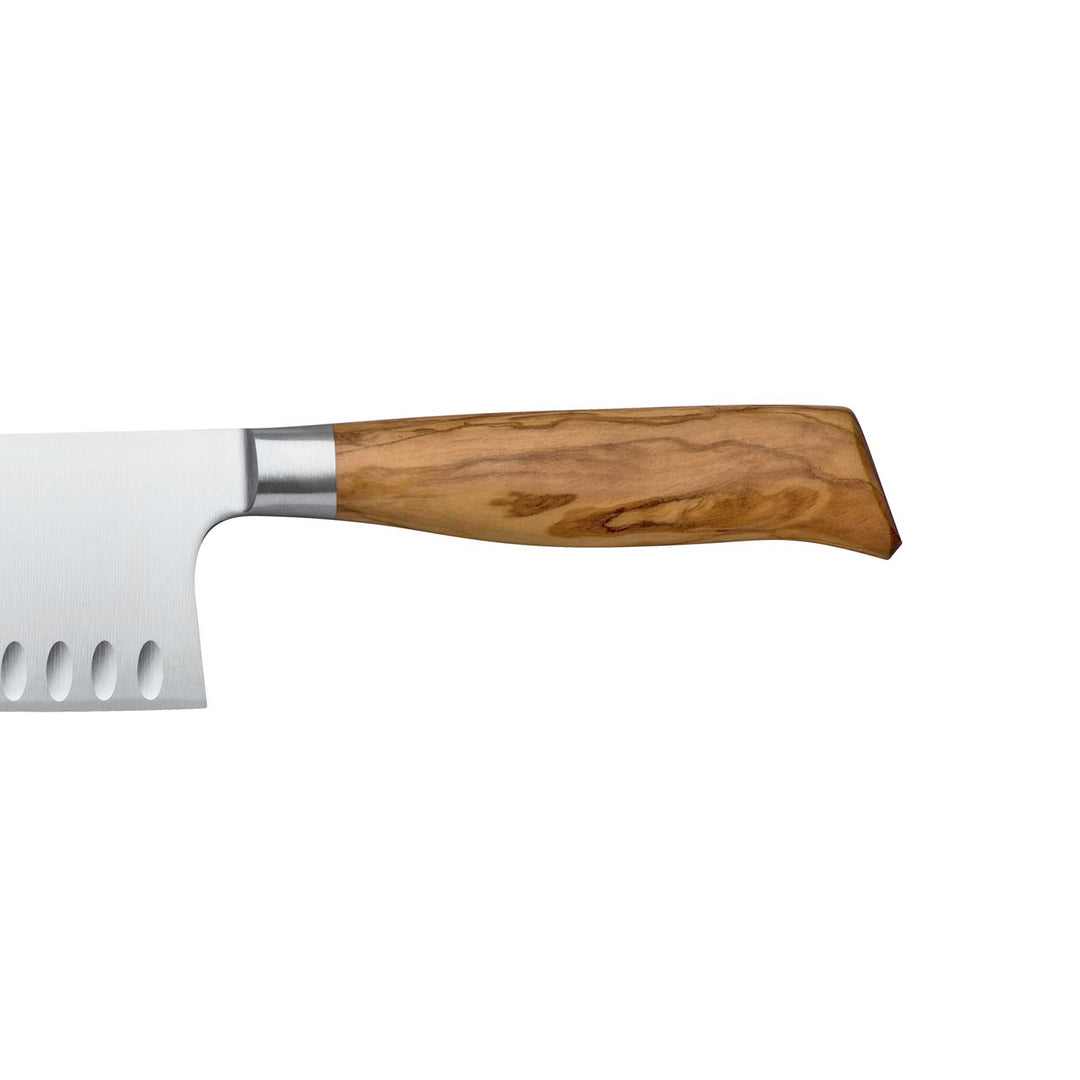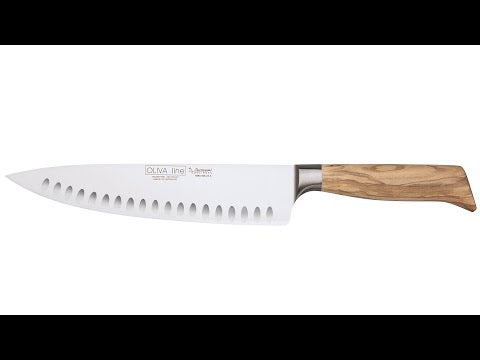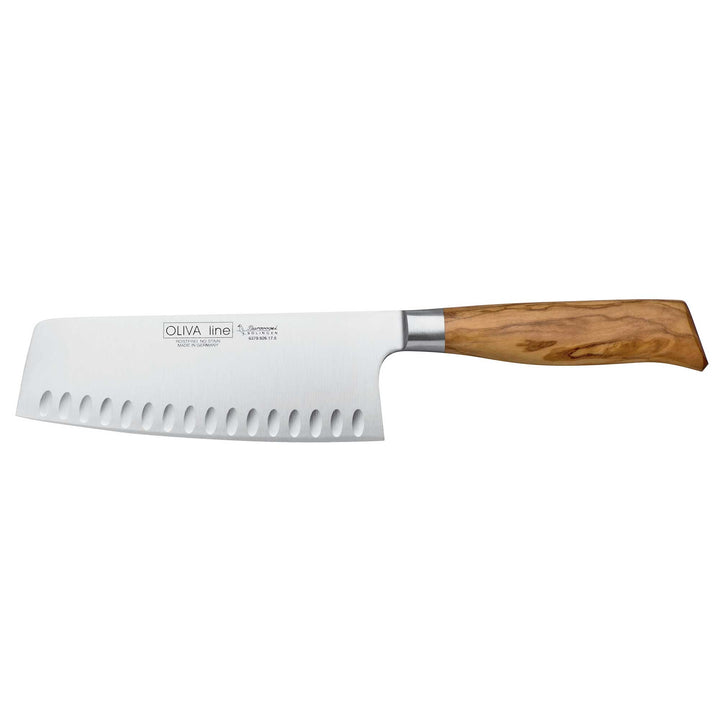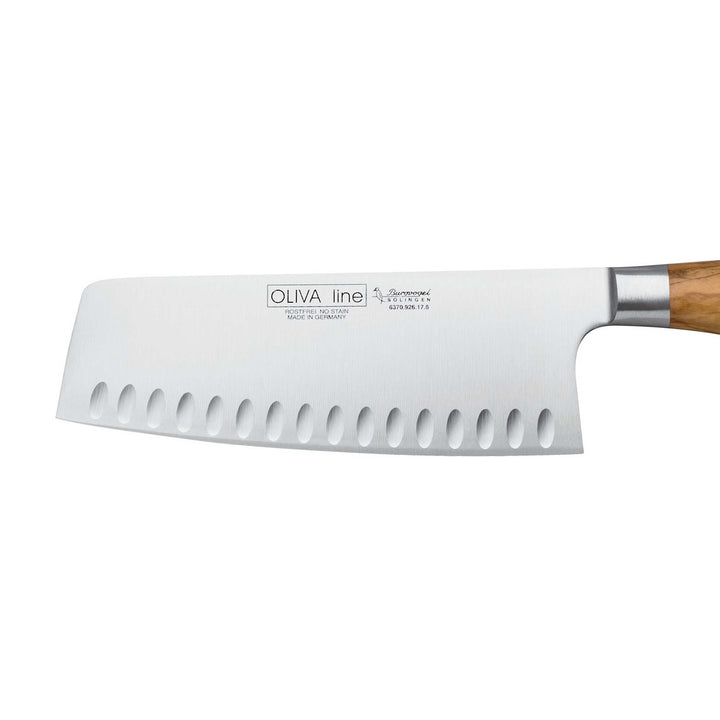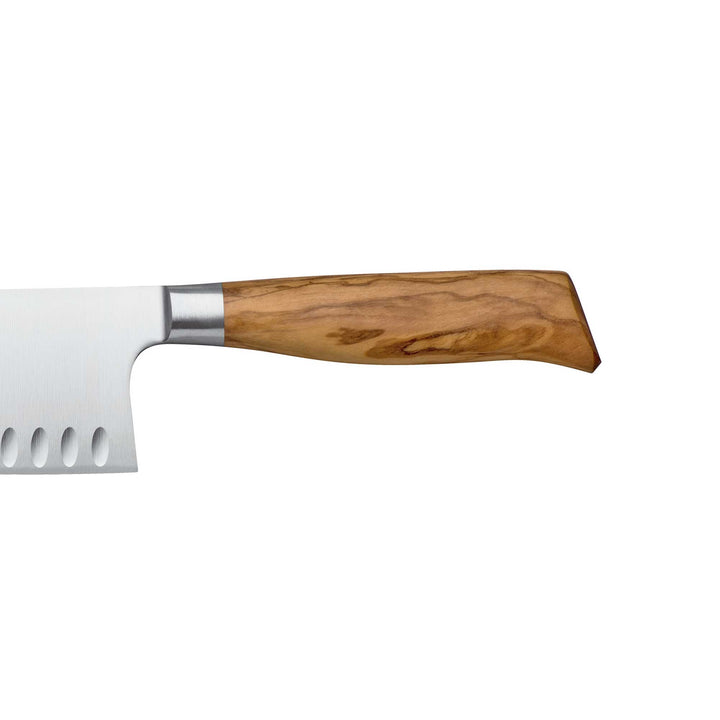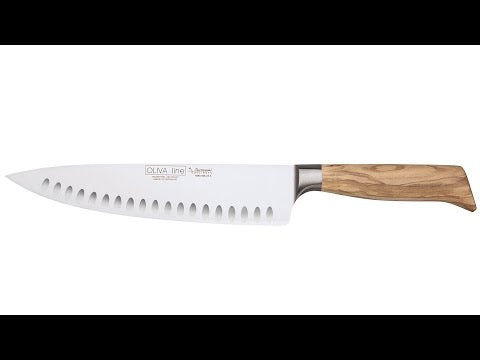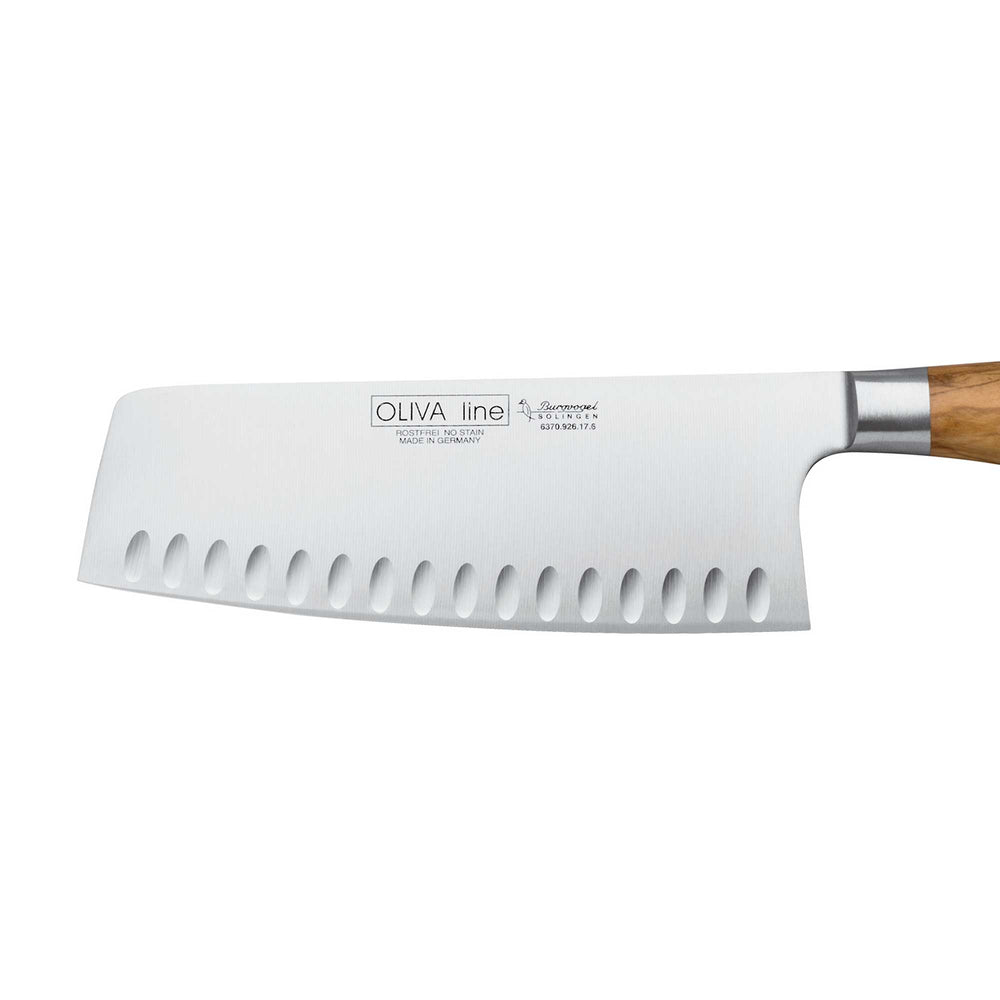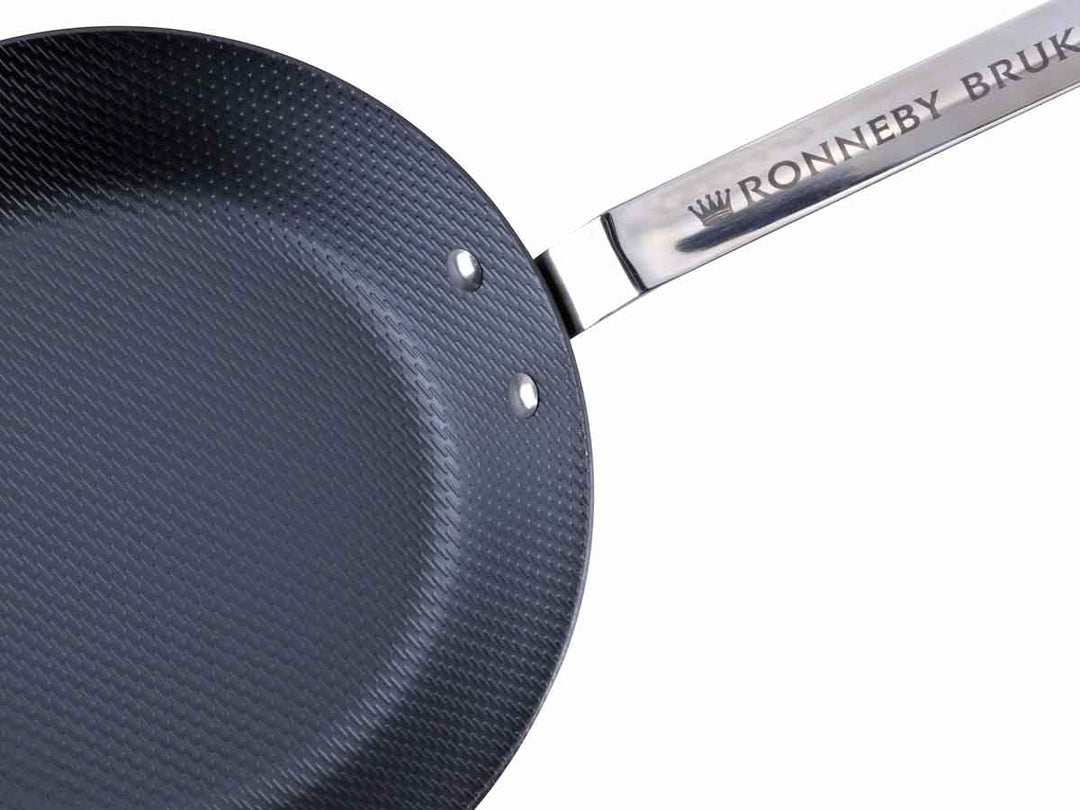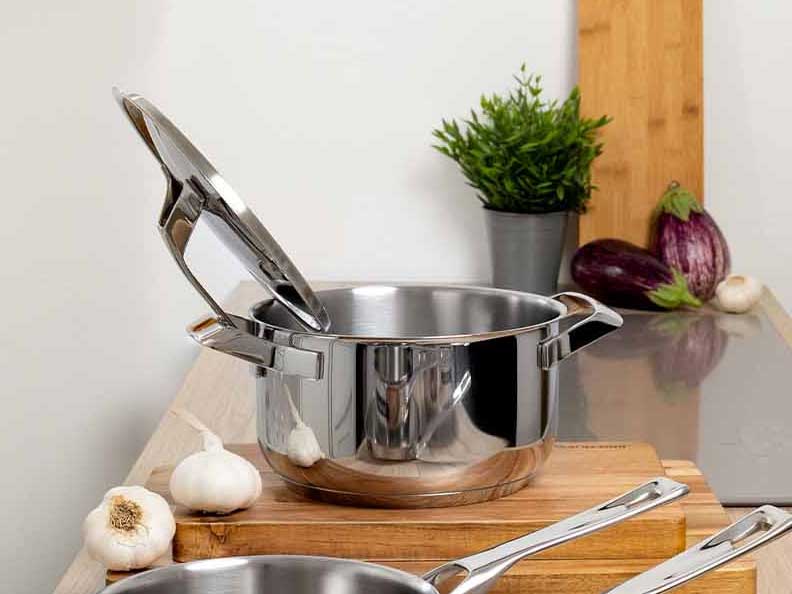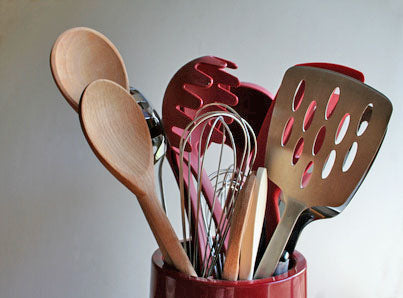Chinese-style chef's knife
Chinese cuisine is generally characterized by rather small-cut ingredients that cook quickly over a short, high heat in a wok. For this reason, a form of chef's knife has developed in China for the effective cutting and chopping of vegetables and herbs, which is characterized by a high blade and a certain heaviness. However, the Chinese cleaver should not be confused with a meat cleaver or heavy chopper, such as those used for hack through bones; the Chinese cleaver is much lighter and more maneuverable. The high blade of the Chinese chef's knife also creates a lot of "storage space" for transferring the chopped food from the chopping board to the pan with the knife, serving as a sort of bench scraper.
The Chinese cleaver from Burgvogel interprets this theme in a modern way. The knife is not too heavy, even for less experienced users, and the slight bend in the blade also allows for gentle, rocking cutting. A double-sided hollowed edge prevents the food from sticking.
Olive wood handle, uniquely beautiful
Like all models in the Oliva Line, the chopping knife in this collection has an olive wood handle, which radiates a natural warmth and has a wide range of fascinating grain patterns that differ from handle to handle. This makes each knife a naturally beautiful one-off.
Forged, oil- and ice-hardened
The Chinese cleaver is also technically impressive: the blade is made from high-quality chrome-molybdenum steel X50CrMoV15 and therefore offers maximum rust resistance. The blade is forged from a single piece, oil and ice-hardened and then polished and honed by hand.
Made in Germany
Burgvogel is a German family business founded in 1949 and now run by the fourth generation, based in the "blade city" of Solingen in the Bergisches Land region. Thanks to the carefully cultivated combination of tradition and progress, Burgvogel knives impress with their reliably high quality and precision in both material and design.
Further details:
- Chinese-style chef's/chopping knife with olive wood handle.
- Blade length approx. 17 cm.
- Blade height approx. 6.2 cm.
- Blade thickness approx. 2.5 mm.
- Weight approx. 250 grams.
- Blade material: Chrome-molybdenum-vanadium steel X50CrMoV15.
- Blade oil-hardened and ice-hardened, hardness approx. 56 +/-1 HRC.
Understanding the information on the size / diameter, height and capacity of cookware:
1) The most important information: diameter = upper inner diameter

The diameter is the most important indication of the size of pots and pans. The measurement is taken at the top inside , i.e. on the inside of the pan/pot rim; hence the designation upper inner diameter, which you will find in our item descriptions. A 28 cm pan has a diameter of 28 cm from one inner edge to the other inner edge. This measurement method is an international standard and authoritative, unless expressly stated otherwise in the item description.

For square pans (e.g. many grill pans) and roasters, the size is given as the product of two lengths. Here you measure again at the top inside, at the longest point, which is usually in the middle. For example, many grill pans have a size of 28 x 28 cm.
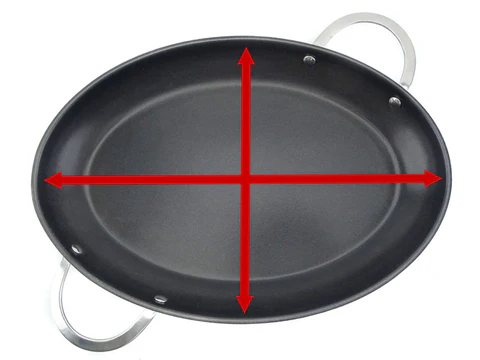
Fish pans and roasters often have an oval shape. As shown above with the square pans, the longest internal dimension is given here. Such a 38 cm fish pan has an inner length of 38 cm on its longest side. At right angles to this is the short side of eg 24 cm. As a result, the pan would be declared as 38 x 24 cm.
2) Bottom diameter = contact surface
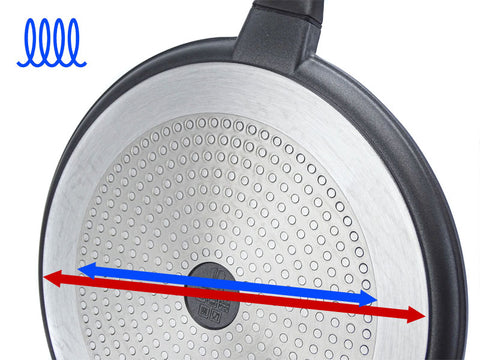
When we talk about base diameter, we mean the diameter of the contact surface, i.e. the surface with which the pan, pot or roaster stands on the stove. Not meant is the frying surface! The information about the base diameter can be helpful when it comes to choosing a suitable cooking surface for the cookware. The size of the cooker and the diameter of the base of the cookware should match to a certain extent in order to avoid damage to the cookware and to ensure that the cookware functions as well as possible.
ATTENTION, induction-suitable aluminum cookware:
Please note that cookware made of aluminum / cast aluminum for induction cooking usually has a stainless steel disc on the base, the diameter of which is often smaller than that of the base (marked in blue in the picture). Where this applies, you will find the corresponding information in our item descriptions.
3) Height of pots and pans

Unless expressly stated otherwise, the indication of the height of a cookware describes the outer edge height, from the top edge of the cookware perpendicularly to the contact surface, without taking lids, handles etc. into account.
The inner height (i.e. from the frying surface up to the edge) can be determined approximately by subtracting the base thickness from the height.
4) Capacity of a cookware

When it comes to capacity, there are often misunderstandings: the capacity of a cookware indicates how much the container can hold at most. That always means filling up to the brim! This is international standard. The filling quantity that can be used when cooking is always less than the capacity.
Please note that in the case of pressure cookers, for safety reasons, the filling quantity permitted in pressure cooking is significantly lower than the capacity of the pot.
 DE: 4.90 €
DE: 4.90 €
 EU: from 14.90 €
EU: from 14.90 €
 UK: from £18.40, delivered duty paid
UK: from £18.40, delivered duty paid
 CH: from 19.90 € (duties & charges may apply with / after delivery)
CH: from 19.90 € (duties & charges may apply with / after delivery)
 USA & CND: from 35.70 € (duties & fees may apply with / after delivery)
USA & CND: from 35.70 € (duties & fees may apply with / after delivery)
More details about shipping costs here.


